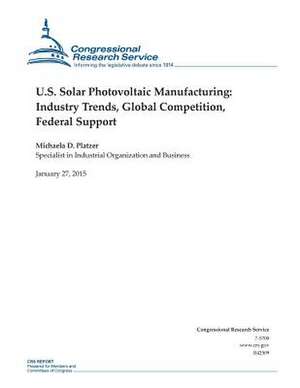U.S. Solar Photovoltaic Manufacturing
Autor Congressional Research Serviceen Limba Engleză Paperback
Preț: 120.75 lei
Nou
Puncte Express: 181
Preț estimativ în valută:
23.12€ • 23.77$ • 19.18£
23.12€ • 23.77$ • 19.18£
Carte disponibilă
Livrare economică 27 ianuarie-10 februarie
Preluare comenzi: 021 569.72.76
Specificații
ISBN-13: 9781507868027
ISBN-10: 1507868022
Pagini: 32
Dimensiuni: 216 x 279 x 2 mm
Greutate: 0.1 kg
Editura: CREATESPACE
ISBN-10: 1507868022
Pagini: 32
Dimensiuni: 216 x 279 x 2 mm
Greutate: 0.1 kg
Editura: CREATESPACE
